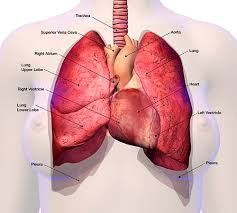Extra Information
The heart vena cava is a large vein that carries deoxygenated blood from the lower and middle parts of the body to the right atrium. There are four valves in the heart, aortic, pulmonary, mitral, and tricuspid. The aortic and pulmonary control blood flow out of the ventricles. The mitral and tricuspid control blood flow from the atria to the ventricles. The aortic valve holds the oxygen-rich blood before it get pumped out into the body. The pulmonary valve regulates blood flow in the heart. The mitral valve lets blood flow from the left atrium to the left ventricle. The tricuspid valve has three flaps that allow blood from the right atrium, flow to the right ventricle, preventing your blood from flowing backwards.
The ventricle cavity can be found inside the rib cage in the torso. It houses primary organs of the cardiovascular and respiratory systems such as the lungs, heart, esophagus and thymus gland. The atrium is the upper chamber where blood enters the ventricles of the heart. There are two atria in the human heart the left atrium receives blood from the pulmonary veins which extend to lungs and bring oxygen to the heart. The right atrium receives blood returning from the heart then it leads to superior vena cava.
The superior vena cava contains blood from the neck and head. The superior vena cava is formed by the right and left union of the brachiocephalic veins. The brachiocephalic vein returns oxygen-depleted blood from the upper heart, head and neck. Unlike the superior vena cava, inferior vena cava (posterior vena cava) carries blood from the lower torso of the body. The iliac veins are connected by the inferior cava, allowing the veins to transport blood to the heart.
The ventricle cavity can be found inside the rib cage in the torso. It houses primary organs of the cardiovascular and respiratory systems such as the lungs, heart, esophagus and thymus gland. The atrium is the upper chamber where blood enters the ventricles of the heart. There are two atria in the human heart the left atrium receives blood from the pulmonary veins which extend to lungs and bring oxygen to the heart. The right atrium receives blood returning from the heart then it leads to superior vena cava.
The superior vena cava contains blood from the neck and head. The superior vena cava is formed by the right and left union of the brachiocephalic veins. The brachiocephalic vein returns oxygen-depleted blood from the upper heart, head and neck. Unlike the superior vena cava, inferior vena cava (posterior vena cava) carries blood from the lower torso of the body. The iliac veins are connected by the inferior cava, allowing the veins to transport blood to the heart.

